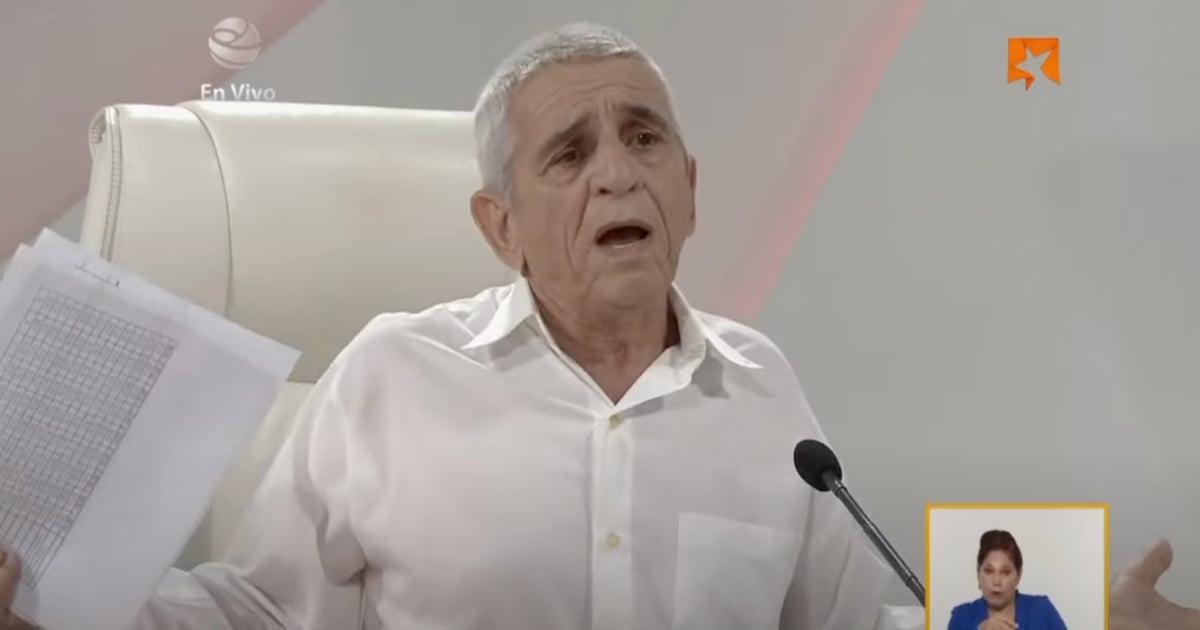During a special appearance on the television program Mesa Redonda this Wednesday, Alfredo López Valdés, the director of Cuba's Electric Union (UNE), openly acknowledged the dire state of the nation’s electrical grid. He described the situation as plagued by extended blackouts, fuel shortages, and outdated infrastructure. "The electrical system is in a critical condition. We are experiencing extended blackouts that prevent circuit rotation. Our efforts are concentrated on repairing five generator units, which, once synchronized, will contribute over 500 megawatts," stated López Valdés.
Despite achieving a boost in the technical availability of distributed generation—reaching up to 1,000 MW—the ongoing diesel shortage hampers sustained operations, he noted. This fuel deficit directly impacts the country's ability to provide consistent electrical service, particularly in rural areas and during peak hours.
Renewable Energy and Maintenance Challenges
In parallel, López Valdés mentioned that the timetable for installing solar photovoltaic parks remains on track. By the end of 2025, it is anticipated that at least 10% of the nation's electricity will be sourced from renewables. However, he admitted that this shift is not yet sufficient to completely eradicate power outages.
The already strained situation is further complicated by the announcement that the Antonio Guiteras (Matanzas) and Felton 1 (Holguín) thermoelectric plants will be taken offline for maintenance before summer. This could exacerbate the energy crisis during peak demand months. “The maintenance will be brief to prevent more severe breakdowns,” assured Lázaro Guerra Hernández, director of Electricity at the Ministry of Energy and Mines (Minem). However, he warned that Guiteras might face another shutdown later in the year for major maintenance work.
Impact of Increased Demand and Aging Infrastructure
Currently, daily power cuts exceed 1,600 MW during peak hours. While the total installed capacity in thermoelectric plants is 1,993 MW, it is projected that only about 1,120 MW will be available by July, with a slight improvement expected in August. Since 2018, the importation of over 17 million household appliances and motorized equipment has consistently driven up energy demand. This rise, combined with high temperatures and outdated technology, has led to the failure of electrical transformers, as evidenced by a recent incident in Havana where 10 transformers failed in a single day.
Cuba plans to have 51 solar parks operational with a combined capacity of 1,115 MW by January 2026. Nonetheless, experts argue that solar generation does not provide system stability due to its reliance on weather conditions, prompting studies into hybrid solutions with accumulators and thermal engines.
Understanding Cuba's Electrical Grid Crisis
What is the current state of Cuba's electrical infrastructure?
Cuba's electrical infrastructure is severely challenged, characterized by extended blackouts, fuel shortages, and obsolete technology.
How is Cuba planning to address its energy shortages?
Cuba is working on increasing its renewable energy capacity, specifically through solar parks, and repairing existing generator units to add more megawatts to the grid.
What impact does the diesel shortage have on Cuba's energy supply?
The diesel shortage critically limits the ability to maintain sustained electrical service, particularly affecting rural areas and peak usage times.
